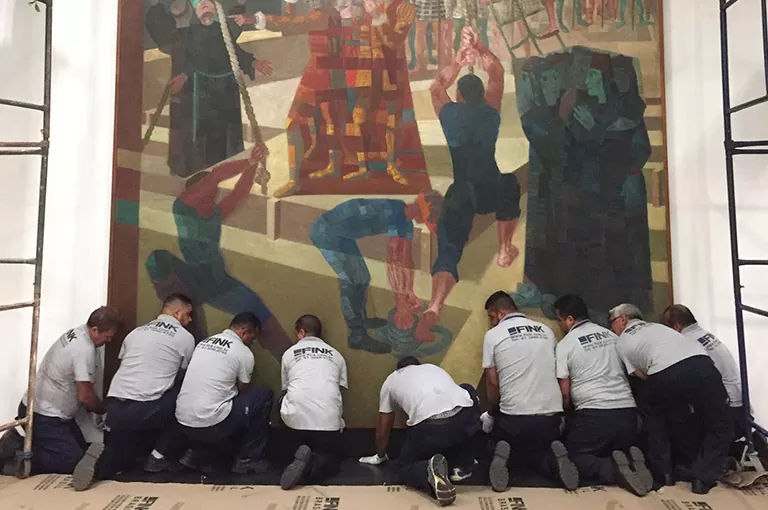
Some goods are absolutely irreplaceable, as is the case of works of art, generally single pieces of valuable historical and cultural value. They require specific care when they need to be transported to an exhibition or, for example, an art gallery for their buyer.
The safest way to transport is undoubtedly inside a wooden box made especially for that work, with an internal protection that prevents the possible shocks during the transport to affect it, as well as the sudden variation of temperature.
However, for budgetary reasons, depending on the fragility of the work and the route it will go through, it can be packed in soft packing, when materials such as bubble wrap, ethafoam blanket, tyvek, glassine paper, cardboard are used. The choice of materials depends on the type of work, and must be acid free, so as not to cause damage during contact. This type of packaging can be applied during an in-city and even interstate transportation, provided that the appropriate vehicle is always used, most often with air suspension truck, which eases the trepidation inside the vehicle, and with air conditioning, in order to keep the temperature and humidity close to what is found in the museum environment.
Of course these same criteria for choosing the vehicle should be used when carrying a work of art in a box of its own. In both cases, the team that will handle the work must be trained and able to do it safely, from the time of collection and packaging of the work, through the storage and fixing of the work in the truck, until delivery and unpacking at the destination end. Everything needs to be studied in advance, because in cases of very large and/or heavy works, services such as lifting or forklift may be necessary, and must be scheduled.
It is very common, and even recommended, that a museological report is made in the collection, which will be conferred by another museologist on delivery. Thus, this condition report will tell the state that the work was before transportation and if it has suffered any damage to its final destination.
For international transportation it is always recommended that the work is well packed in a box specially made for it, and that it can undergo more than one trip, since, often, the work goes to a temporary exhibition and must return safe and sound in the same box for its owner. Of course the cost is greater than soft packing, but you have to remember that many steps are right ahead, and there is no way to let it suffer any harm in this course. If there is money in the project, it is important that it is supervised at airports by specialized personnel, following all their moves and ensuring that handling in these areas will be as calm as possible.
Brazil’s air network abroad is reasonable and some destinations need a connection, therefore, supervision is again recommended. Freighter planes are much rarer, and they are those responsible for carrying the works of extraordinary dimensions. For Europe and USA, there are few options, so the airline may offer to take to the final airport with a truck of its own, which is generally not accepted by the museum. In this case, the specialized carrier must be at the other end to complete the embarkation there and collect the work, taking it across the borders to its destination.
It is therefore worth trying to, as much as possible, fit the dimensions to a passenger plane, and to do so, we use an A-frame, when the box of the work is placed on a structure and follows inclined. In addition, operation on the freighter is usually more costly.
The no less important customs procedures must be treated with great care, and only a specialized agent can take such care of this stage so well. There are details that only those who with the matter on a daliy bais will know to handle and to anticipate, in order to avoid, as much as possible, that the shipment is delayed.
Some works of art travel with their couriers, who are authorized by the owner to stay close to them all the time and even travel in the same plane. Their role is to ensure that everything is going to occur within the standards, at all times. It demands special attention, and the carrier offers you the maximum comfort and safety.
The best of all is to know that your work has enabled a work of art to arrive safely in the museum and that there thousands of people will be able to enjoy and share its presence, often for the first and only time.
Read more about our services: https://www.fink.com.br/mobility/tips/103-transport-of-works-of-art.html











